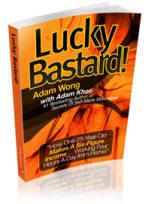Top Glove Corporation Bhd (Symbol & Code: TOPGLOV 7113) Update - 16th Dec 2010
Posted by Daniel Wong | 10:05 PM | Top Glove | 0 comments »Fair Value: RM 4.12
Current Price: RM 5.12
Recommendation: HOLD/SELL
Yesterday's quarter earnings report shows that its earnings is still in a downtrend. I'm revising my Fair Value further down. If you need to cash out your investment in this particular stock in the short term (less than 1 year), I suggest that you SELL off all your holdings of this stock (even if you have to cut lost). I'm sorry for failing to give a SELL call in the month of June after Topglov annouced a lower quarter profit. I failed to see that the exterior factors (latex price uptrend, weakening US dollar & aggresive expansion by the rubber glove industry causing over supply) are actually fundamental changes affecting the company. The surge in price during that month due to the Bonus Issue announcement have clouded my judgement of the fundamental changes of this company, which call for a SELL.
However, for those of you who intent to invest in this stock for the long term (more than 3 years), I still stick to my earlier suggestion: Don't sell off all of your shares, just Hold half and Sell half. This is because we can't be sure where the bottom is. Don't average down or buy back now, even though the price have dropped substantially from your initial Sell price. I suggest that you begin to average down or buy back ONLY WHEN the company begin to show signs of uptrend in its earnings.
Note: For Supermax, my advice is the same as above - Sell off all if you're short term; Hold half and Sell half if you're long term.
By Ooi Kok Hwa
Although the economic situation now compares with that of 1993, the last push must come from local retail investors
THE recent rally in our local bourse has prompted many seasoned investors, especially those who experienced the super bull run in 1993, to wonder whether the current rally is about to turn into a real bull run. Of course, nobody can tell for sure what will happen next, but we certainly can do some homework, comparing the circumstances back in 1993 against the current situation.
In 1991, Tun Dr Mahathir Mohamad unveiled the philosophy of “Malaysia Incorporated” which was a development strategy for Malaysia to achieve a developed nation by 2020. In the early 1990s, despite slowdown in the global economy, as the third largest economy in South-East Asia, after Indonesia and Thailand, Malaysia was supported by relatively strong macroeconomic fundamentals and resilient financial system. With the real GDP growing at 9.9%, ringgit appreciation, strong export growth and the Government’s measures to hold inflation low at 3.6%, the local stock market became an attractive alternative to foreign investors.
Before 1993, foreign investment in Malaysia was mainly dominated by long-term direct investment in the manufacturing sector. However, as a result of measures taken to develop our domestic equity market, coupled with the strong economic backdrop, we saw a massive influx of foreign capital inflow, which helped fuel the super bull-run in 1993. Within the year, the market increased by 98% to reach an all-time high of 1,275.3 points and foreign investors’ participation accounted for 15% of total trading value of our local bourse. This had also driven the market into a highly speculative one, which lured many retailers into the market, thinking of making fast and easy money.
With the presence of new and unfamiliar players, the market became a huge “casino”. Retail investors bought into stocks based on rumours rather than company fundamentals. Among the hottest topics during that time were the awards of government mega projects, privatisation candidates, sector play and regular news on upward revision of corporate earnings. Examples for the highly speculative stocks were Ekran, Ayer Molek Rubber Co, Berjuntai Tin Dredging and Kramat Tin Dredging.
In 1993, with the economy booming, the Government planned several mega projects, including the KL International Airport (RM8bil), Johor-Singapore Second Link (RM1.6bil) and Kuala Lumpur Light Rail Transit (RM1.1bil). The news of contract awarding immediately sent the market into speculative mood on those potential candidates. Similarly, the news of the Government planning on privatising some of the its own corporations, such as Petronas, KTM and Pos Malaysia had also driven these counters into prime trading targets.
Dreaming: Will the super bull run come?
Besides, the ease of accessing bank credit by investors also contributed to the market rally. We noticed that a high percentage of loans was channelled to broad property sector as well as the purchase of securities.
As a result of massive inflow of foreign funds and the super bull run in stock market, Bank Negara introduced a number of selective capital controls in early 1994 to stabilise the financial system,
Recently, our Prime Minister Datuk Seri Najib Tun Razak unveiled the Economic Transformation Programme (ETP) with the aim to boost our gross national income (GNI) to US$523bil in 2020 from US$188bil in 2009. The programme is to attract investment not only from the Government, but also (more importantly) from domestic direct investment as well as foreign direct investment. In view of strong economic growth, our GDP growth is anticipated to increase by 6% this year.
In September, we notice that there was a net inflow of foreign funds again in our equity market. Over the past few weeks, the average stock market daily volume had been hovering above one billion shares per day. Almost every day, the top 10 highly traded stocks were those speculative stocks with poor fundamentals. In addition, we noticed that some retail investors had started to get excited again in the stock market.
According to Andrew Sheng in his book titled From Asian To Global Financial Crisis, there were two main indicators to irrational exuberance during the super bull run in 1993. The first was the amah (domestic maid) syndrome. We need to be careful when amahs got excited about the stock market. This was because they did not know what they were buying and would always be the last to sell. The second indicator was when businessmen began to speculate stocks in the stock market. This was because they might neglect their businesses and use some of their cash for speculation.
Comparing our current market situation with the 1993 bull run, there are certain similarities that we see, such as strong economic growth, ringgit appreciation, inflow of foreign capital and ease of credit. However, our local retailer participation is yet to get boiling, which may be the last push factor towards the bull run. Hence, once the participation of the local investors starts to get heated up, together with more inflow of foreign fund, that may be the signs of the market heading for a ‘mini’ super bull run.
● Ooi Kok Hwa is an investment adviser and managing partner of MRR Consulting.
Supermax Corporation Bhd (Symbol & Code: SUPERMX 7106) - Update 1st November 2010
Posted by Daniel Wong | 8:00 AM | Supermax | 0 comments »Fair Value: RM4.52
Recommendation: SELL/HOLD
The next quarterly report will be out some time this month. There is a possibility that the result will be less encouraging like Topglove. As the US government continue to print money, the US dollar will continue to be weakened, and this will hurt the earnings of rubber glove companies.
There is a possibility that the market price of Supermax will continue to drop. Or it might not. So the best strategy is to sell half and hold half. :-P If the market price continue to drop, you would have some extra cash to buy at a lower price. If the market price goes up instead, you would have the other half to ride the uptrend and use the other half in cash for other stocks when the boat of opportunity arrives.
Top Glove Corporation Bhd (Symbol & Code: TOPGLOV 7113) Update - 7th Oct 2010
Posted by Daniel Wong | 11:57 PM | Top Glove | 0 comments »Source: TheEdge Malaysia
KUALA LUMPUR: Top Glove Corp Bhd reported net profit of RM45.06 million in the fourth quarter ended Aug 31, 2010, down 20.6% from RM56.81 million a year ago.
It said on Wednesday, Oct 6 that revenue was 27.5% higher at RM541.38 million from RM424.51 million a year ago. Earnings per share were 7.3 sen versus 9.39 sen. It declared dividend of nine sen per share compared with 7.5 sen.
It said the earnings showed a decline despite higher sales due to normalised demand and oversupply of capacity situation.
“This was further aggravated with persistently high latex prices and weakening of US dollar, which affected the group’s revenue and profit margins. To date, latex price has increased by around 55% and US dollar has weakened against the ringgit by around 13% since beginning of the financial year 2010 (12 months ago),” it said.
For the financial year ended Aug 31, 201, net profit rose 45% to RM245.28 million from RM169.13 million. Revenue increased 35.9% to RM2.079 billion from RM1.529 billion.
Daniel Wong's Recommendation:
Fair Value: RM 5.49
Current Price: RM 5.50
Recommendation: HOLD/SELL
There's a possibility that the earnings of Topglove will continue to drop in the next 3 to 6 months. Thus, the share price will continue to drop as well. But in the long term (more than 3 years), I expect the earnings to go back up for 2 reasons: 1) Demand on rubber gloves continue to grow every year, albeit at a normalised rate now; 2) I believe the over capacity problem is just temporary. As all the rubber glove manufacturers began to 'come to their senses' that they shouldn't expand too much and too fast, their plan for factories expansion will be deferred. So in times to come, I expect that the economics of supply-demand will be back in equilibrium. When that time comes, Topglove will be able to effectively increase the price of rubber gloves to cover the increasing latex cost. In fact, latex price does not always go up, as you can see here: http://spreadsheets.google.com/pub?key=pjJte0uaKGHGoQmtO_6VUMQ
However, there are 'signs' that the US Dollar will continue to be weaken against the Ringgit. For this reason, I personally would Sell at least half of my holdings in rubber glove shares to take advantage of the sharp drop in their market prices, if it is to happen. ;-)
Andrew Chia, the author of Money Secrets and Money,Greed & Power, will be organizing 4 seminars this week and next week.
The details of the seminar are here: http://andrewchia.com/?page_id=1548
You may email or sms Nic to book your seats. Entrance is free.
Top Glove Corporation Bhd (Symbol & Code: TOPGLOV 7113) Update - 3rd October 2010
Posted by Daniel Wong | 11:30 PM | Top Glove | 0 comments »Fair Value: RM 5.49
Current Price: RM 5.35
Recommendation: BUY
As the current market price is below my Fair Value, I'm upgrading my recommendation from Hold to Buy. Same as for my description for Supermax, I'm not sure if the market price will drop further from this price. So the best strategy would be to buy in stages.
Refer to previous write-up here for more info on this company.
Supermax Corporation Bhd (Symbol & Code: SUPERMX 7106) - Update 3rd October 2010
Posted by Daniel Wong | 11:22 PM | Supermax | 0 comments »Fair Value: RM4.52
Recommendation: BUY
As the current market price is below my Fair Value, I'm upgrading my recommendation from Hold to Buy. However, I'm not sure if the market price will drop further from this price. I believe a strong bull sentiment on this stock will only come back when there is an increase in the next quarter earnings. Otherwise, the market price may drop further. But I don't expect the downtrend in quarterly earnings to last more than 1 year. Therefore, the best strategy will be to buy in stages.
Refer to previous write-up here for more info about this company.
Subscribe to:
Posts (Atom)
Disclaimer
This is a personal weblog, reflecting the author's personal views. All information provided here, including recommendations (if any), should be treated for informational purposes only. The author should not be held liable for any informational errors, incompleteness, or delays, or for any actions taken in reliance on information contained herein.














